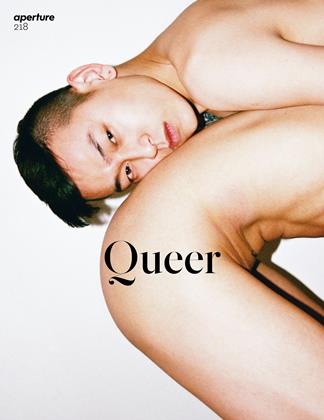K8 Hardy
Andy Campbell
In K8 Hardy's Position Series Diptych (Right), 2011, the artist sits on a pile of seaside rubble. Legs spread eagle, she holds a piece of cut melon (or is it two halves of a salmon filet?) in front of her crotch. But this is not all. Superimposed onto this image is another: a close-up of a mannequin head sporting a blonde buzz cut, large round sunglasses, and a headband with the slogan: Feminismo sin mujeres (Feminism without women). Hardy’s photograph is an excoriation of those who say we live in a "postfeminist” moment, when feminism’s goals have been accomplished, in spite of the overwhelming evidence that feminism is still urgent and essential. At the same time, Hardy’s photograph offers the utopie promise of a feminism that complicates its most basic assumptive category: women. Graphic and political, this photograph, like so many others in Hardy's Positions series (2009-11), sums up the deep feminist ethic and exuberant self-making endemic in her work.
Hardy began making the Positions photographs in 2009, two years after the final issue of LTTR, a collaborative queer art journal that Hardy cofounded with several others. Embracing what fellow LTTR cofounder and artist Emily Roysdon calls ecstatic resistance, Hardy posits a reframing of well-worn genres, such as fashion photography. Indeed, Hardy’s refusal to be easily categorized extends to her artistic practice, which encompasses a range of media, including performance art, with photography as a central component. Beginning with the 2002 color-photocopy zine FashionFashion, remade in 2014 in overscaled editions, Hardy’s multimedia forays have consistently abutted the fashion world. She has drawn out the historical connections between Vidal Sassoon and Brutalist architecture, in 2009’s Hair der Kunst, and even appeared as an overworked besuited designer to close Untitled Runway Show, her own fashion show held during the Whitney Biennial in 2012. In Hardy’s fashionverse, the body can happily be as contingent as a photograph taped to the wall—as it is in Positions Series #20 (2009).
Hardy’s photographs are "tissues of quotations,” to crib from Sherrie Levine (who cribbed from Roland Barthes). So perhaps comparisons to Cindy Sherman are inevitable; poet Eileen Myles describes Hardy as "Cindy Sherman with affect.” But whereas Sherman’s work delves deeply into a set of already understood gendered modes of pictorial representation, Hardy’s work resolutely confounds them—it's difficult to tell precisely which gendered tropes she’s accessing, because she’s often coilaging so many. How else to describe the footballplayer-cum-karate-kid with leather boots in Positions Series #15 (2009)?
Calvin Klein advertisements from the late 1990s and early 2000s approached androgyny by stripping the body of signifiers; more than a decade later Hardy gets to a similar, yet queerer, place through a studied maximalist approach. Even her chest binding is bedazzled. Hardy puts political stock in eclecticism over stability, play over didacticism, and color above all. Considerations of who wields power are never very far away, as the silhouetted figure giving the finger to someone outside of the frame in Position Series #53 (2011) reminds us. But neither is fun. And with more than five thousand followers on Instagram, every day is a new opportunity for another position, or two, or three. In a text Hardy produced for Reena Spaulings Fine Art, she writes, "I’m still not fitting in. I’m a collision. You know what I mean?” We do.
Andy Campbell, PhD, is critic-in-residence with the Core Program, Museum of Fine Arts Houston/Glassell School of Art, and an adjunct instructor of visual art and gender and women’s studies at Rice University. His writings have been published in GLQ, Artforum.com, and Pastelegram, among others.
 View Full Issue
View Full Issue
More From This Issue
-
 Pictures
PicturesJimmy DeSana
Spring 2015 By William J. Simmons -
 Pictures
PicturesDavid Benjamin Sherry
Spring 2015 By Kevin Moore -
 Pictures
PicturesRen Hang
Spring 2015 By Stephanie H. Tung -
 Words
WordsGay Semiotics Revisited
Spring 2015 By Julia Bryan-Wilson -
 Pictures
PicturesLyle Ashton Harris
Spring 2015 By Senam Okudzeto -
 Pictures
PicturesDean Sameshima
Spring 2015 By Ana Finel Honigman












